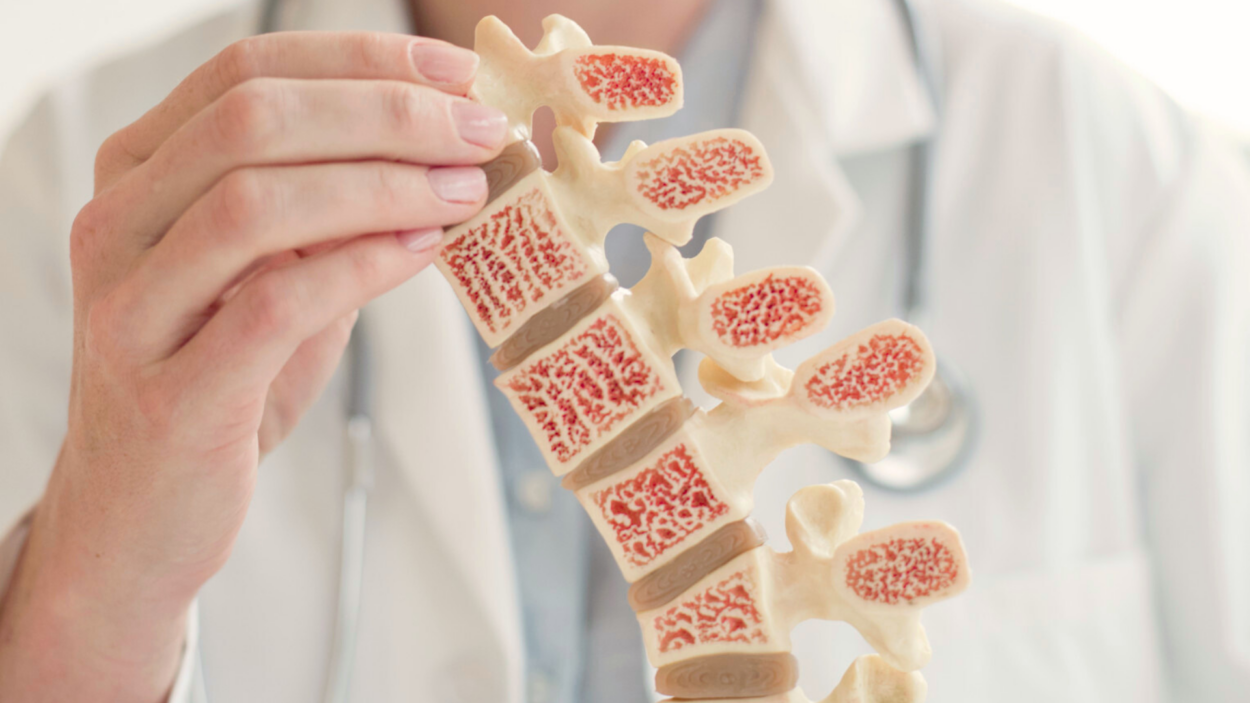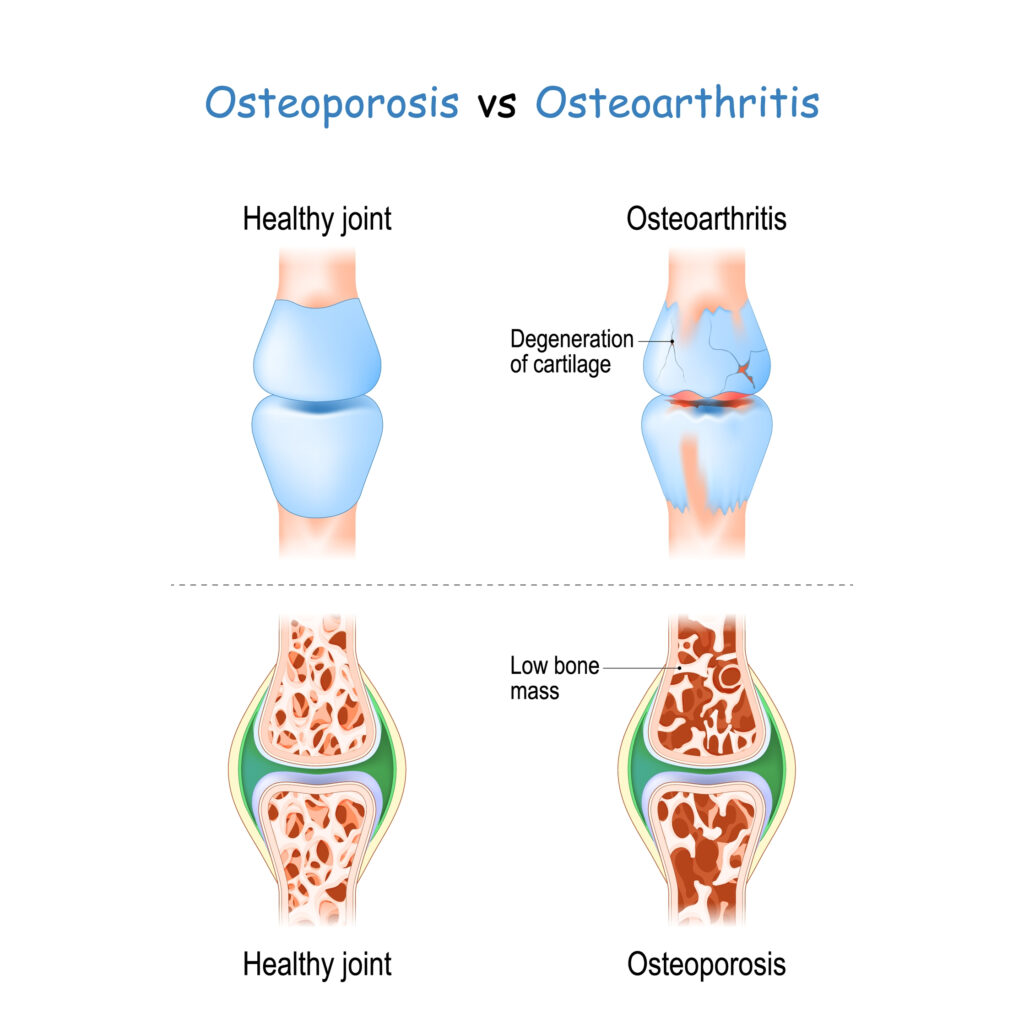
May marks Osteoporosis Awareness and Prevention Month, a time dedicated to educating individuals about this silent but serious bone disease. Osteoporosis, which translates to “porous bones,” weakens bones, making them fragile and more susceptible to fractures.
What is Osteoporosis?
Osteoporosis is a common bone disease characterized by low bone mass and deterioration of bone tissue, leading to increased bone fragility and risk of fractures. Often referred to as a silent disease, osteoporosis progresses without symptoms until a fracture occurs, typically in the hip, spine, or wrist. These fractures can have severe consequences, including chronic pain, disability, and even mortality, particularly in older adults.
Causes of Osteoporosis
Several factors contribute to the development of osteoporosis:
- Aging: Bone density decreases with age, making older adults more prone to osteoporosis.
- Gender: Women are at a higher risk of developing osteoporosis than men, especially after menopause due to decreased estrogen levels.
- Hormonal Changes: Hormonal imbalances, such as reduced estrogen or testosterone levels, can weaken bones.
- Nutritional Deficiencies: Inadequate intake of calcium and vitamin D, essential for bone health, can increase the risk of osteoporosis.
- Lifestyle Factors: A sedentary lifestyle, excessive alcohol consumption, smoking, and a diet low in calcium and vitamin D can contribute to bone loss.
- Medical Conditions: Certain medical conditions like rheumatoid arthritis, hyperthyroidism, and gastrointestinal disorders can interfere with bone health.
- Medications: Prolonged use of certain medications, such as corticosteroids and some anti-seizure medications, can weaken bones.
Symptoms of Osteoporosis
Osteoporosis is often asymptomatic until a fracture occurs. However, some warning signs may include:
- Loss of height over time
- Stooped posture
- Back pain, caused by fractured or collapsed vertebrae
- Fractures occurring with minimal trauma or pressure
Treatment Options for Osteoporosis
While there is no cure for osteoporosis, several treatment options can help manage the condition and reduce the risk of fractures:
- Medications: Bisphosphonates, hormone therapy, denosumab, and selective estrogen receptor modulators (SERMs) are some medications prescribed to slow bone loss and reduce fracture risk.
- Calcium and Vitamin D Supplements: Adequate intake of calcium and vitamin D is essential for maintaining bone health. Supplements may be recommended if dietary intake is insufficient.
- Lifestyle Modifications: Regular weight-bearing exercises, such as walking, jogging, and strength training, can help strengthen bones. Additionally, quitting smoking, limiting alcohol intake, and ensuring a balanced diet rich in calcium and vitamin D are crucial.
- Fall Prevention Strategies: Taking precautions to prevent falls, such as removing tripping hazards at home, using handrails on staircases, and wearing proper footwear, can reduce the risk of fractures, especially in older adults.
- Bone Density Monitoring: Regular bone density tests, such as dual-energy X-ray absorptiometry (DEXA) scans, can help monitor bone health and assess the effectiveness of treatment.
Osteoporosis vs Arthritis
While osteoporosis and arthritis are both musculoskeletal disorders, they affect the body in different ways.
- Osteoporosis primarily affects bone density, leading to weakened and porous bones. The main concern with osteoporosis is an increased risk of fractures, particularly in the hip, spine, and wrist. Individuals with osteoporosis may experience fractures with minimal trauma or pressure.
- Arthritis, on the other hand, refers to inflammation of the joints. There are several types of arthritis, including osteoarthritis and rheumatoid arthritis. Osteoarthritis occurs when the protective cartilage that cushions the ends of bones wears down over time, leading to pain, stiffness, and reduced range of motion in the affected joints. Rheumatoid arthritis, an autoimmune disorder, causes inflammation in the lining of the joints, resulting in pain, swelling, and deformity.

While osteoporosis and arthritis are distinct conditions, they can coexist in some individuals, particularly as both conditions become more common with age. It’s essential to differentiate between the two and seek appropriate medical care for accurate diagnosis and management.
Prevention of Osteoporosis
Prevention plays a pivotal role in reducing the incidence of osteoporosis and its associated complications. Here are some preventive measures individuals can take:
- Dietary Changes: Ensure a diet rich in calcium and vitamin D by including dairy products, leafy greens, fortified foods, and supplements if necessary.
- Regular Exercise: Engage in weight-bearing exercises and resistance training to strengthen bones and improve balance and coordination.
- Lifestyle Modifications: Avoid smoking and limit alcohol consumption, as they can contribute to bone loss.
- Safety Precautions: Take steps to prevent falls, such as installing grab bars in bathrooms, using non-slip mats, and wearing appropriate footwear.
- Bone Health Assessment: Talk to your healthcare provider about your risk factors for osteoporosis and undergo bone density testing if recommended.
Osteoporosis is a silent but significant health concern that affects millions of people worldwide. Understanding its causes, treatment options, and preventive measures is crucial for maintaining strong and healthy bones throughout life. If you experience any of the symptoms listed above or have concerns about your bone health, contact The Center for expert guidance and personalized care.
Stay informed about upcoming webinars and events, and gain valuable insights on leading a healthy, pain-free life from our experts by subscribing to our monthly newsletter. Click the button below to join!





